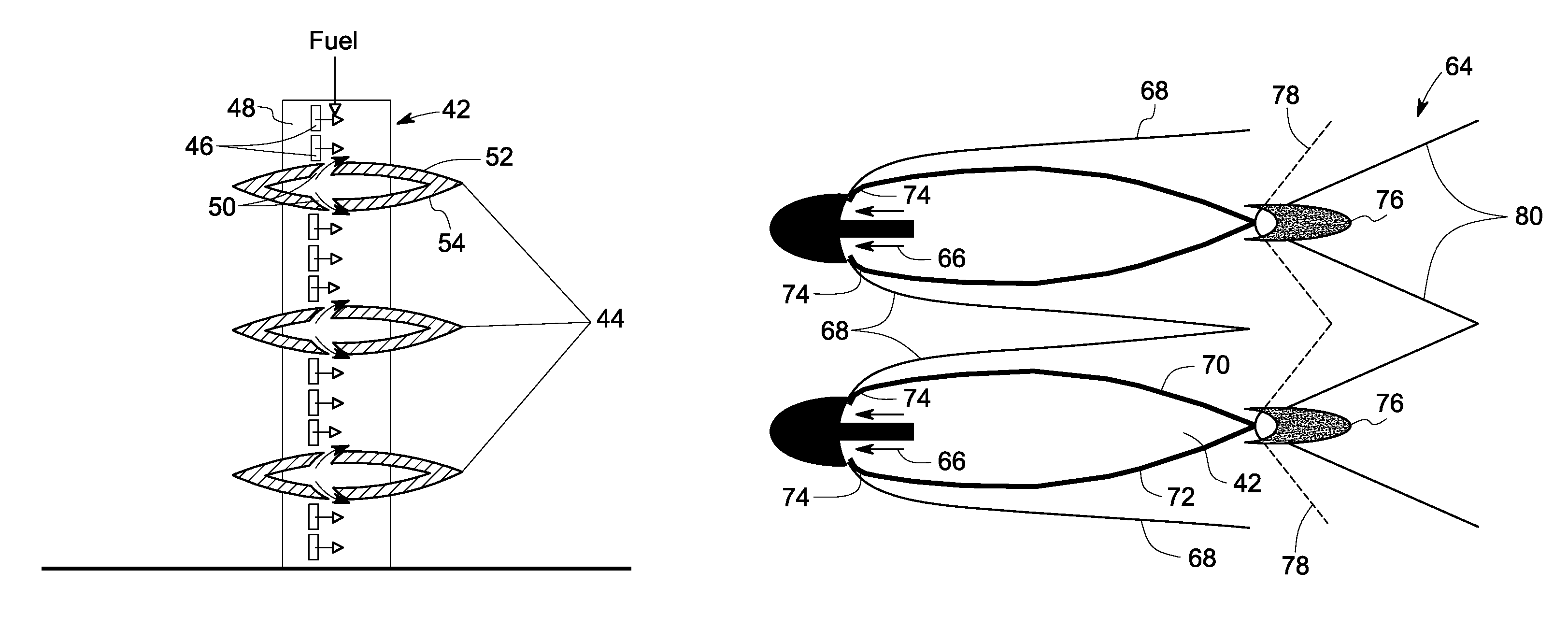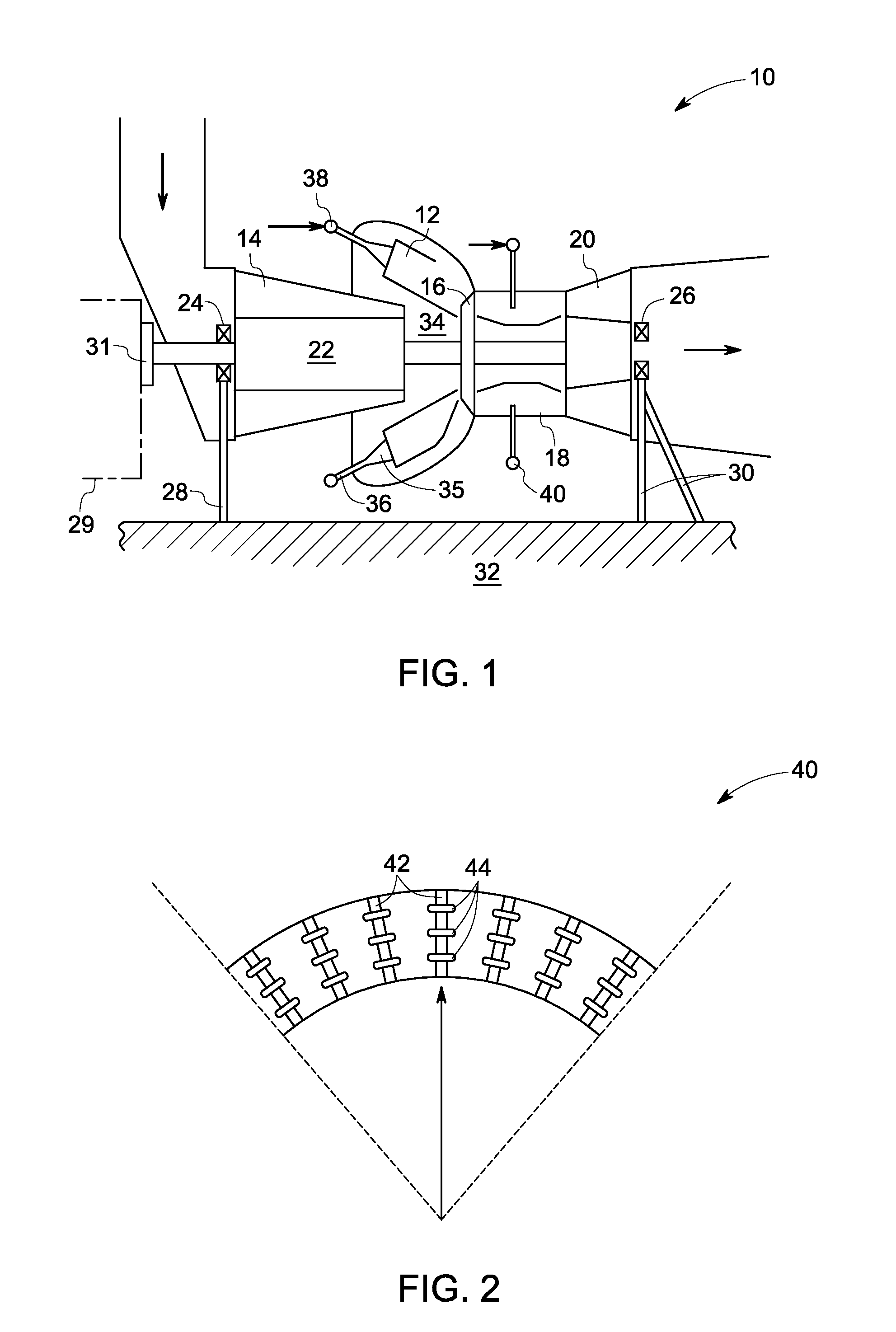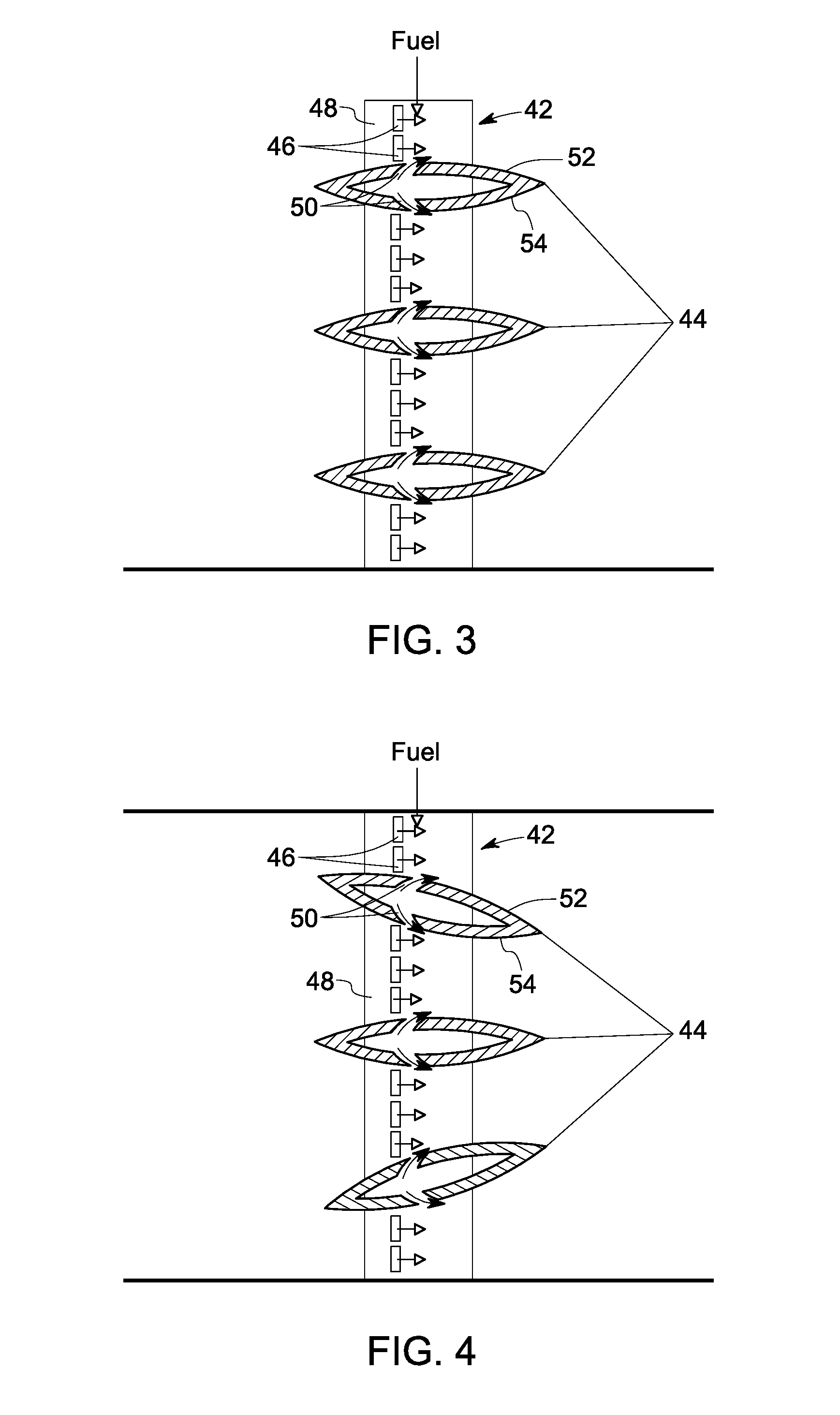Aerodynamic pylon fuel injector system for combustors
a fuel injector and pylon technology, applied in the direction of machines/engines, combustion types, lighting and heating apparatus, etc., can solve the problems of combustion dynamics, non-optimal power output generated by the second turbine, and non-uniform fuel distribution in the combustion chamber
- Summary
- Abstract
- Description
- Claims
- Application Information
AI Technical Summary
Benefits of technology
Problems solved by technology
Method used
Image
Examples
Embodiment Construction
[0015]In accordance with the embodiments discussed herein below, a combustor system is disclosed. The exemplary combustor system includes a pylon fuel injection system coupled to a combustion chamber and configured to inject fuel to the combustion chamber. The pylon fuel injection system includes a plurality of radial elements, each radial element having a plurality of first Coanda type fuel injection slots. A plurality of transverse elements are provided to each radial element. Each transverse element includes a plurality of second Coanda type fuel injection slots. In accordance with another exemplary embodiment of the present invention, a gas turbine system having an exemplary pylon fuel injection system is disclosed. The pylon injection systems have a larger number of fuel injection locations creating uniform distribution of fuel in the combustion chamber. Related problems such as combustion dynamics, non-uniform mixing of fuel, and pressure drop within the combustion chamber are...
PUM
 Login to View More
Login to View More Abstract
Description
Claims
Application Information
 Login to View More
Login to View More - R&D
- Intellectual Property
- Life Sciences
- Materials
- Tech Scout
- Unparalleled Data Quality
- Higher Quality Content
- 60% Fewer Hallucinations
Browse by: Latest US Patents, China's latest patents, Technical Efficacy Thesaurus, Application Domain, Technology Topic, Popular Technical Reports.
© 2025 PatSnap. All rights reserved.Legal|Privacy policy|Modern Slavery Act Transparency Statement|Sitemap|About US| Contact US: help@patsnap.com



